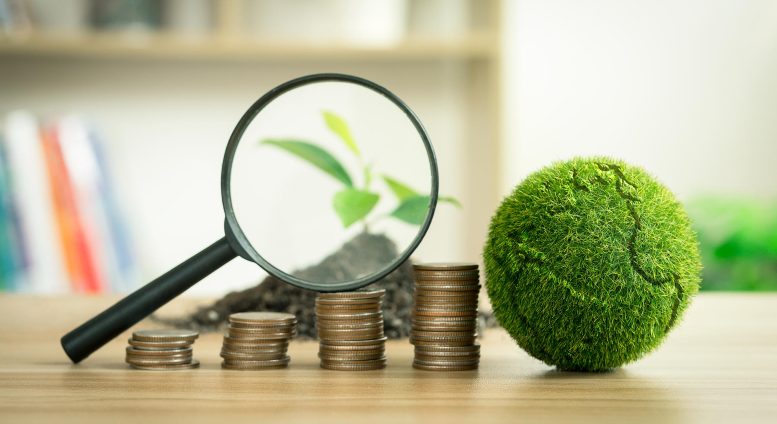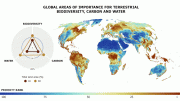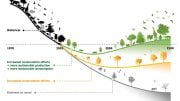
The economic feasibility of climate change goals hinges on the prioritization of non-market factors such as human health and biodiversity, according to a new study. It calls for a balanced focus on climate change reduction costs and benefits, with a greater emphasis on health and biodiversity. Credit: IOP Publishing
The economic feasibility of the climate change targets specified in the Paris Agreement depends on the prioritization of non-market elements like human health and biodiversity conservation, according to a recent study led by Dr. Taikan Oki, ex-Senior Vice-Rector of United Nations University, Japan, and published in IOP Publishing’s academic journal Environmental Research Letters.
A team of researchers from 23 institutions, including the University of Tokyo, National Institute for Environmental Studies, and Kyoto University, has conducted a cost-benefit analysis on climate change, integrating previously overlooked non-market aspects such as the loss of biodiversity and its implications on human health.
The team calculated the cost of climate change for varying priority systems, estimating the total cost including mitigation between 2010 and 2099 to be 46-230 trillion US dollars.
The results show that the financial benefits of reducing climate change are often similar to the cost of mitigation efforts. The research team estimates the cost of additional mitigation efforts to be 45 to 130 trillion US dollars, while the financial benefits of these reduction efforts range from 23 to 145 trillion US dollars. They found that for the 2°C temperature goal to be economically feasible there must be a greater emphasis placed on the future impact of biodiversity and health factors, arguing that these factors will become ever more pressing in the future.
The study shows that climate change would be best approached in an integrated manner with biodiversity and health issues considered side-by-side with economic factors. This is especially true when non-market values are taken into full account including health factors such as diarrhoeal diseases and malaria, and the decrease of species on Earth such as fish and insects.
Dr. Oki, who was formerly the Coordinating Lead Author for the Intergovernmental Panel on Climate Change, says: “The world’s pursuit of climate goals is currently not on track. Our future will depend on how much importance we place on risks such as large-scale irreversible events, as well as how we accept and deal with them. One reason for this is that the costs of mitigation are often similar to, or in excess of, the economic benefits of reducing climate change. We must place a higher priority on non-monetary commodities such as human health and biodiversity and accelerate technological innovations to reduce the mitigation cost.”
Reference: “Total economic costs of climate change at different discount rates for market and non-market values” by Takahiro Oda, Jun’ya Takakura, Longlong Tang, Toshichika Iizumi, Norihiro Itsubo, Haruka Ohashi, Masashi Kiguchi, Naoko Kumano, Kiyoshi Takahashi, Masahiro Tanoue, Makoto Tamura, Qian Zhou, Naota Hanasaki, Tomoko Hasegawa, Chan Park, Yasuaki Hijioka, Yukiko Hirabayashi, Shinichiro Fujimori, Yasushi Honda, Tetsuya Matsui, Hiroyuki Matsuda, Hiromune Yokoki and Taikan Oki, 1 August 2023, Environmental Research Letters.
DOI: 10.1088/1748-9326/accdee









This is impossible to calculate to the satisfaction of anyone interested. On one hand, you have the crusty old hippies, who think of environmentalism in Aldo Leopold’s terms, national parks and reusing and simplicity and husbandry. They likely believe the calculus is wrong because whatever is bought by the trillions will be even more destructive, and what must you do to nature first to get those hundreds of trillions? On the other hand, you have modern environmentalists drinking carbon-offset avocado lattes from recycled-plastic cups sitting in their new disposable $100000 battery cars, who believe the world will end in 6 to 60 years. To them, the entire planet is the cost and the risk and all the money on it, so every cost or action is reasonable as a climate-protection strategy, from banning paper cups to murder. Neither camp will agree with even the premise of the study, and I don’t see how it can be quantifiable with either ideology. Trust the Japanese to try, and I’m thankful, but the approach in the study is a simple carbon tax, as if you paying more means you will need less instead of even more.
If economics are dismissed as being of only secondary importance, then the the world is at risk of having the economy collapse, people starving en masse, and there then being insufficient resources to keep everyone healthy. What good does it do to emphasize health if there aren’t enough doctors, sufficient medicines, and hospital staff to serve the sick, and people don’t have the money necessary to pay their hospital bills, let alone their utilities? Technological advances, even if possible, don’t come for free.
The view of emphasizing human health and biodiversity at the cost of reduced concern for the resources that support a strong economy is myopic, at best. It is only rich countries that have the luxury of being concerned about things that don’t directly contribute to their survival. Most people today have little understanding of where and how their basic needs are provided. There is nothing more hypocritical than seeing a bunch of protestors wearing clothes made of synthetic fibers derived from crude oil, sporting gold piercings and wedding bands, congregating at transportation choke points, after traveling from their homes in conveyances made possible by mining and drilling, all to protest mining or fossil fuel use.
What many people fail to realize is that we’re already standing on the brink of an era in which our options will be severely limited as a direct result of climate change. It’s no longer a question of whether we’d prefer not to take any actions which might precipitate economic disruption and widespread panic. Climate change gradually will destroy agriculture and wipe out marine life worldwide because the planet’s surface temperature and oceans simply will be too hot to support our sources of food. Outdoor temperatures will be too hot for many types of conventional work operations. This is bound to happen eventually unless humans take drastic measures to reduce carbon emissions globally and start doing this without delay. We need to understand that humanity is not in control of this unfolding situation. We have no silver bullet solutions.
An interesting opinion, but not supported by any facts. It should be noted that there is more warming in the Winter and at night than in the daytime. Open ocean tropical water rarely gets above about 30 deg C because evaporation causes clouds to form and rain to fall, cooling the water. What is commonly called Arctic Amplification acknowledges that the Arctic is warming 2-3X faster than the rest of the world, which increases the global average. Your temperature extrapolations have no basis in fact. They are little more than speculation.
Agriculture continues to produce ever more grain with no real signs of a problem — except perhaps getting diesel fuel in the future to run the tractors and combines. That is a politically imposed problem based on misperceptions of politicians and their constituents who are no more likely to be able to define science (without the aid of ‘Alexis’) than they are being able to define what a woman is.
I grew up at a time when none of my schools had air conditioning, except for possibly a swamp cooler for my elementary school when I lived in Phoenix. It may not have been comfortable, but we all survived and probably learned more than the kids of today attending air-conditioned schools. Today, even farm machinery has air-conditioned cabins, so even a few degrees won’t make a lot of difference to the people inside — assuming that GPS-guided, autonomous farm equipment doesn’t completely replace human drivers.
A lot of hand flailing trying to support your belief system, but without facts that are more persuasive.
Check out a documentary called The Greening of Planet Earth. It’s a 90s educational film bought and paid for by the fossil fuel industry as propaganda; that said, it wasn’t wrong. CO2 is plant food, and higher temperatures open up new land for plants and increase precipitation. The science actually bears out with satellites showing the greening and increased crop growth.
The risk of climate change isn’t that the planet will burn, but that climates around the world will be shuffled. What we’ve built could be insufficient for new climatic requirements, and what grew somewhere won’t, but it’ll grow somewhere else where it wouldn’t. That is still chaotic and scary, and has destroyed and created empires, but overstating a conclusion makes a whole argument dubious.